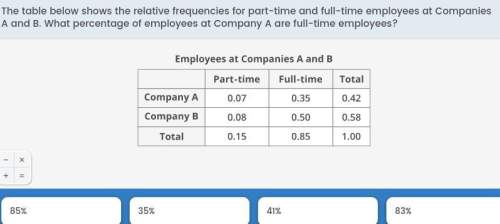
Mathematics, 20.09.2020 07:01 suewignall
Which statement best explains the value of 18 − (−5)?
The additive inverse of −5 is +5, so 18 − (−5) = 23.
The additive inverse of −5 is −5, so 18 − (−5) = 23.
The additive inverse of −5 is −5, so 18 − (−5) = 13.
The additive inverse of −5 is +5, so 18 − (−5) = 13.

Answers: 1
Another question on Mathematics

Mathematics, 21.06.2019 16:00
Asegment in the complex plane has a midpoint at 7 – 2i. if the segment has an endpoint at 11 – 3i, what is the other endpoint?
Answers: 1

Mathematics, 21.06.2019 20:30
Tom is the deli manager at a grocery store. he needs to schedule employee to staff the deli department for no more that 260 person-hours per week. tom has one part-time employee who works 20 person-hours per week. each full-time employee works 40 person-hours per week. write and inequality to determine n, the number of full-time employees tom may schedule, so that his employees work on more than 260 person-hours per week. graph the solution set to this inequality.
Answers: 1


Mathematics, 22.06.2019 00:00
One positive integer is 2 less than another. the product of the two integers is 24. what are the integers?
Answers: 1
You know the right answer?
Which statement best explains the value of 18 − (−5)?
The additive inverse of −5 is +5, so 18 − (...
Questions














Computers and Technology, 28.12.2019 05:31









